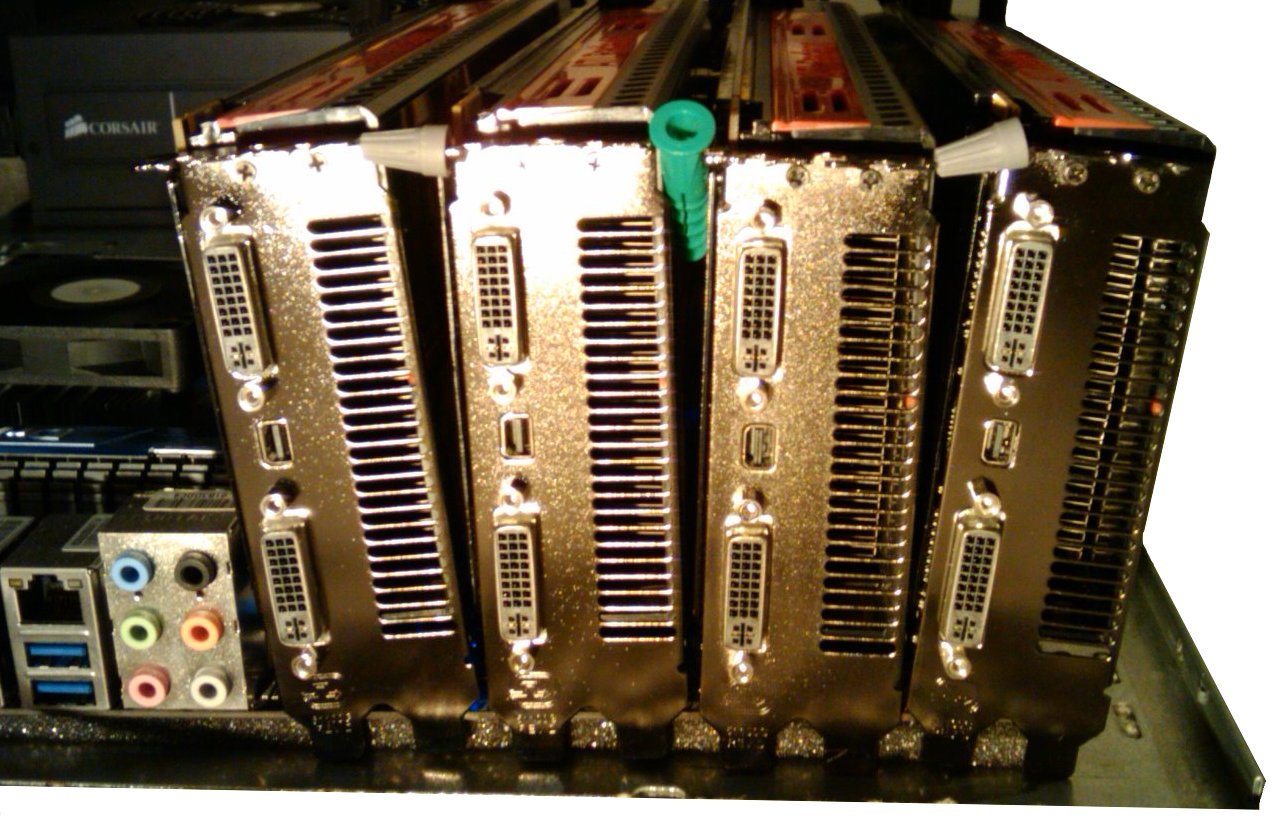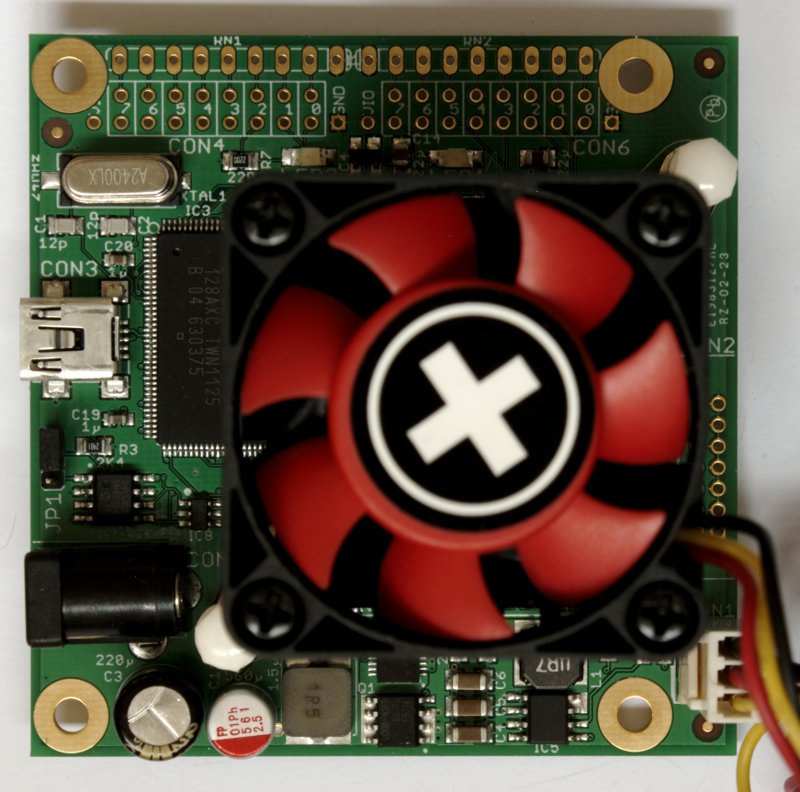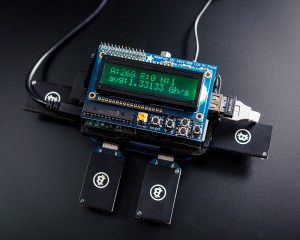Best Bitcoin Mining Hardware for 2018 – Bitcoin Miner Reviews
The following page reviews the best hardware available today in order to make some sort of a profit with Bitcoin mining.
If you’re completely new to Bitcoin mining please read our “Is Bitcoin mining still profitable?” post before moving on. It will give you a good idea about the profitability of mining and will make you think twice before entering this very competitive niche.
If however, you are aware of the competitive nature of Bitcoin mining and still want to get in the game, here you will be able to find the best Bitcoin mining hardware available. The good news is that there are not many mining hardware companies left that make ASIC miners so choosing will probably be easy. That’s also the bad news. Even though many websites state long lists of Bitcoin mining hardware, only a handful of mining rigs can deal with the rising Bitcoin mining difficulty that’s out there these day.
How to compare Bitcoin miners
Below is a side by side comparison of all relevant miners. Underneath the table you’ll be able to see a summarized review of each of the miners. Keep in mind that in order to see how profitable you can be with any Bitcoin miner you’ll need to use a Bitcoin mining calculator based on your electricity cost, the Bitcoin exchange rate and the increase in difficulty throughout time. Since not all of these variables are known you will have to guess some as best as you can.
Select miner
AntMiner S9
Antminer R4
Antminer T9
AntMiner S7
AntMiner S5
Antrouter R1
Use our basic Bitcoin mining calculator to help you compare miners
Antminer S5 Bitcoin Miner Summarized Review
The Antminer S5 is the entry level Bitcoin miner for someone who isn’t ready to part away with more than a few hundred bucks. Users who have purchased it seem mostly pleased with the device. However this is an outdated device and with today’s mining difficulty and decreasing block reward you won’t make more than 0.05 BTC each money in revenue. This means you’ll need to run it for about one year and 8 months to get a full Bitcoin. Some customers also complained about the device being too noisy, but that’s just how a miner works – it’s loud and hot.
Click here to view Antminer S5 deals on eBay
Avalon 6 BitcoinMiner Summarized Review
The Avalon 6 is a great contender for both S5 and S7 AntMiners. From the small number of reviews that can be found online people are saying that it’s not nearly as loud as your usual miner and the hash rate is pretty reasonable. However at the current price tag I see little reason to choose it over the competition, it’s $100 more than the S7 that brings to the table superior results.
Click here to view Avalon 6 deals on eBay
Antminer S7 Bitcoin Miner Summarized Review
The Antminer S7 was the raining champion up until a few months ago. Even at today’s difficulty levels and with the block reward halving you can still make 0.15BTC a month. It’s not a lot at the moment but if the Bitcoin price continues to rise it may be a profitable investment.
However I wouldn’t suggest buying this rig due to the fact that it’s neither here nor there. It’s too expensive for an entry-level device and it’s too weak to generate any substantial amount of Bitcoins. Users who bought the device seem generally happy with it however it was first introduced on August 2015, so it’s not that new.
Antminer S9 Bitcoin Miner Summarized Review
The most advanced and most efficient Bitcoin miner today is the Antminer S9. If you’re serious about Bitcoin mining this is your rig. At the current difficulty this miner can mine around 0.02 Bitcoins every month which makes it seem like it would break even within a year. However we did not take into account the electricity costs, pool fees and hardware cost. Not to mention the fact the difficulty can rise and the Bitcoin price can drop.
It seems that even though this is the toughest miner out there, there’s only a small amount of time until it too will become outdated. Until that happens though, it looks like a pretty reliable piece of equipment.
Antminer R4 Bitcoin Miner Summarized Review
The Antminer R4 is intended for hobby mining – basically people who want to mine Bitcoins at home. Even though it can’t compete with the S9 it will probably be a good contender for the S7. The main advantage it has over other miners is the fact that it is has a specialized cooling unit that is much quieter than any other Bitcoin miner out there – since it’s made for a home environment.
According to our mining calculator this miner should break even in about 12 months. However if Bitcoin’s price continues to rise this miner may yet yield a good return on investment.
Avalon 7 Bitcoin Miner Summarized Review
The Aavalon 721 (or Avalon 7 as it is known commonly) is the latest Bitcoin miner supplied by Avalon in late 2016. It has a lower price tag than most of the advanced miners but is also less powerful. It seems to be a good choice for people who are looking for a cheaper entry level miner and don’t want to go for an Antminer S7.
According to our calculations, this miner should break even in about 24 months, making it a pretty risky investment. You can also connect up to 5 Avalon 721s in a row creating a powerful 30 TH/s mining rig.
Antminer T9 Bitcoin Miner Summarized Review
The Antminer T9 is a more reliable, cheaper version of the successful S9 model. However, the T9 uses almost 30% more power than the S9 making it much less attractive in terms of return on investment. If you want to get up and mining as soon as possible and reliability is more important to you than efficiency, then we’d say the T9 is a reasonable choice. If you don’t pay for power and just want a good, fast miner you can “fire up and forget,” the Antminer T9 will fit the bill nicely.

Introduction
Mining is the process of adding transaction records to Bitcoin's public ledger of past transactions (and a "mining rig" is a colloquial metaphor for a single computer system that performs the necessary computations for "mining". This ledger of past transactions is called the block chain as it is a chain of blocks. The blockchain serves to confirm transactions to the rest of the network as having taken place. Bitcoin nodes use the blockchain to distinguish legitimate Bitcoin transactions from attempts to re-spend coins that have already been spent elsewhere.
Mining is intentionally designed to be resource-intensive and difficult so that the number of blocks found each day by miners remains steady. Individual blocks must contain a proof of work to be considered valid. This proof of work is verified by other Bitcoin nodes each time they receive a block. Bitcoin uses the hashcash proof-of-work function.
The primary purpose of mining is to set the history of transactions in a way that is computationally impractical to modify by any one entity. By downloading and verifying the blockchain, bitcoin nodes are able to reach consensus about the ordering of events in bitcoin.
Mining is also the mechanism used to introduce Bitcoins into the system: Miners are paid any transaction fees as well as a "subsidy" of newly created coins. This both serves the purpose of disseminating new coins in a decentralized manner as well as motivating people to provide security for the system.
Bitcoin mining is so called because it resembles the mining of other commodities: it requires exertion and it slowly makes new units available to anybody who wishes to take part. An important difference is that the supply does not depend on the amount of mining. In general changing total miner hashpower does not change how many bitcoins are created over the long term.
Difficulty
The Computationally-Difficult Problem
Mining a block is difficult because the SHA-256 hash of a block's header must be lower than or equal to the target in order for the block to be accepted by the network. This problem can be simplified for explanation purposes: The hash of a block must start with a certain number of zeros. The probability of calculating a hash that starts with many zeros is very low, therefore many attempts must be made. In order to generate a new hash each round, a nonce is incremented. See Proof of work for more information.
The Difficulty Metric
The difficulty is the measure of how difficult it is to find a new block compared to the easiest it can ever be. The rate is recalculated every 2,016 blocks to a value such that the previous 2,016 blocks would have been generated in exactly one fortnight (two weeks) had everyone been mining at this difficulty. This is expected yield, on average, one block every ten minutes.
As more miners join, the rate of block creation increases. As the rate of block generation increases, the difficulty rises to compensate, which has a balancing of effect due to reducing the rate of block-creation. Any blocks released by malicious miners that do not meet the required difficulty target will simply be rejected by the other participants in the network.
When a block is discovered, the discoverer may award themselves a certain number of bitcoins, which is agreed-upon by everyone in the network. Currently this bounty is 12.5 bitcoins; this value will halve every 210,000 blocks. See Controlled Currency Supply.
Additionally, the miner is awarded the fees paid by users sending transactions. The fee is an incentive for the miner to include the transaction in their block. In the future, as the number of new bitcoins miners are allowed to create in each block dwindles, the fees will make up a much more important percentage of mining income.
The mining ecosystem

Users have used various types of hardware over time to mine blocks. Hardware specifications and performance statistics are detailed on the Mining Hardware Comparison page.
CPU Mining
Early Bitcoin client versions allowed users to use their CPUs to mine. The advent of GPU mining made CPU mining financially unwise as the hashrate of the network grew to such a degree that the amount of bitcoins produced by CPU mining became lower than the cost of power to operate a CPU. The option was therefore removed from the core Bitcoin client's user interface.
GPU Mining
GPU Mining is drastically faster and more efficient than CPU mining. See the main article: Why a GPU mines faster than a CPU. A variety of popular mining rigs have been documented.
FPGA Mining
FPGA mining is a very efficient and fast way to mine, comparable to GPU mining and drastically outperforming CPU mining. FPGAs typically consume very small amounts of power with relatively high hash ratings, making them more viable and efficient than GPU mining. See Mining Hardware Comparison for FPGA hardware specifications and statistics.
ASIC Mining
An application-specific integrated circuit, or ASIC, is a microchip designed and manufactured for a very specific purpose. ASICs designed for Bitcoin mining were first released in 2013. For the amount of power they consume, they are vastly faster than all previous technologies and already have made GPU mining financially.
Mining services (Cloud mining)
Mining contractors provide mining services with performance specified by contract, often referred to as a "Mining Contract." They may, for example, rent out a specific level of mining capacity for a set price at a specific duration.
As more and more miners competed for the limited supply of blocks, individuals found that they were working for months without finding a block and receiving any reward for their mining efforts. This made mining something of a gamble. To address the variance in their income miners started organizing themselves into pools so that they could share rewards more evenly. See Pooled mining and Comparison of mining pools.
Bitcoin's public ledger (the "block chain") was started on January 3rd, 2009 at 18:15 UTC presumably by Satoshi Nakamoto. The first block is known as the genesis block. The first transaction recorded in the first block was a single transaction paying the reward of 50 new bitcoins to its creator.
Wie man Bitcoins verdienen
Wenn Sie für Bitcoins arbeiten möchten, müssen Sie jemanden zu zahlen Sie sie erst finden. Die gute Nachricht ist, dass mehr und mehr Menschen sind die Bitcoins als je zuvor Auszahlung. Bitcoin wird immer beliebter weltweit denn es ist sehr schnell und einfach sie an jemanden senden.
Bevor Sie beginnen, Bitcoins zu verdienen, stellen Sie sicher Sie bereits haben eine Bitcoin-Wallet-Setup so dass andere Sie bezahlen können. Dann bestimmen, wie Sie sie verdienen möchten — wir haben eine Reihe von verschiedenen Möglichkeiten aufgeführt.
Bitminter - bitcoin minting the easy way!
Sign up and point your ASIC machines to mint.bitminter.com:3333 with your user name and a dummy (x or 123) password. Or use a specific region:
- us1.bitminter.com:3333 (United States)
- us2.bitminter.com:3333 (United States)
- ca1.bitminter.com:3333 (Canada)
- eu1.bitminter.com:3333 (Europe)
A closer server can slightly reduce stale (rejected) work. A reject ratio around 0.10% is normal. Check live stats to see your reject ratio in the current shift.
If you have firewall issues try port 443 instead of 3333.
New users can mine with just the user name. That's because you start out with a worker that has the default setting enabled. To use a specific worker mine with your user name, an underscore, then a worker name, e.g. John_asic3. There is no password check. You can put X or 123 as password.
What is BitMinter?
Bitminter is a bitcoin mining pool that aims to make it easy for anyone to make bitcoins. Bitminter is one of the oldest pools. Since we opened in 2011 over 450 000 people have registered accounts with us. We hope that you will join us too!
What do I need?
ASICs took over in 2013. Mining one bitcoin with just a PC now takes millions of years. You'll want a 1 TH/s or faster ASIC machine to start a small mining-at-home operation. Have a look at Antminer from Bitmain and AvalonMiner from Canaan. Used ASICs are available at ebay and similar places.
Reward System
Your work is recorded in shifts. When we create a new block you get a share of the income proportional to how much of the work in the last 10 completed shifts is yours. This reward system is known as PPLNS with shifts. 99% of the mining income (including transaction fee income) is paid out to users. Donations are optional and will unlock various perks.
Advertisements



Using bitcoins
You can pay for goods and services with bitcoins. Try the open market OpenBazaar or the freelancer market Rein. Get bitcoin-themed items from BTC Trinkets. Or what about Overstock, Expedia, Mega. Find more with CoinMap.

Introduction
Mining is the process of adding transaction records to Bitcoin's public ledger of past transactions (and a "mining rig" is a colloquial metaphor for a single computer system that performs the necessary computations for "mining". This ledger of past transactions is called the block chain as it is a chain of blocks. The blockchain serves to confirm transactions to the rest of the network as having taken place. Bitcoin nodes use the blockchain to distinguish legitimate Bitcoin transactions from attempts to re-spend coins that have already been spent elsewhere.
Mining is intentionally designed to be resource-intensive and difficult so that the number of blocks found each day by miners remains steady. Individual blocks must contain a proof of work to be considered valid. This proof of work is verified by other Bitcoin nodes each time they receive a block. Bitcoin uses the hashcash proof-of-work function.
The primary purpose of mining is to set the history of transactions in a way that is computationally impractical to modify by any one entity. By downloading and verifying the blockchain, bitcoin nodes are able to reach consensus about the ordering of events in bitcoin.
Mining is also the mechanism used to introduce Bitcoins into the system: Miners are paid any transaction fees as well as a "subsidy" of newly created coins. This both serves the purpose of disseminating new coins in a decentralized manner as well as motivating people to provide security for the system.
Bitcoin mining is so called because it resembles the mining of other commodities: it requires exertion and it slowly makes new units available to anybody who wishes to take part. An important difference is that the supply does not depend on the amount of mining. In general changing total miner hashpower does not change how many bitcoins are created over the long term.
Difficulty
The Computationally-Difficult Problem
Mining a block is difficult because the SHA-256 hash of a block's header must be lower than or equal to the target in order for the block to be accepted by the network. This problem can be simplified for explanation purposes: The hash of a block must start with a certain number of zeros. The probability of calculating a hash that starts with many zeros is very low, therefore many attempts must be made. In order to generate a new hash each round, a nonce is incremented. See Proof of work for more information.
The Difficulty Metric
The difficulty is the measure of how difficult it is to find a new block compared to the easiest it can ever be. The rate is recalculated every 2,016 blocks to a value such that the previous 2,016 blocks would have been generated in exactly one fortnight (two weeks) had everyone been mining at this difficulty. This is expected yield, on average, one block every ten minutes.
As more miners join, the rate of block creation increases. As the rate of block generation increases, the difficulty rises to compensate, which has a balancing of effect due to reducing the rate of block-creation. Any blocks released by malicious miners that do not meet the required difficulty target will simply be rejected by the other participants in the network.
When a block is discovered, the discoverer may award themselves a certain number of bitcoins, which is agreed-upon by everyone in the network. Currently this bounty is 12.5 bitcoins; this value will halve every 210,000 blocks. See Controlled Currency Supply.
Additionally, the miner is awarded the fees paid by users sending transactions. The fee is an incentive for the miner to include the transaction in their block. In the future, as the number of new bitcoins miners are allowed to create in each block dwindles, the fees will make up a much more important percentage of mining income.
The mining ecosystem

Users have used various types of hardware over time to mine blocks. Hardware specifications and performance statistics are detailed on the Mining Hardware Comparison page.
CPU Mining
Early Bitcoin client versions allowed users to use their CPUs to mine. The advent of GPU mining made CPU mining financially unwise as the hashrate of the network grew to such a degree that the amount of bitcoins produced by CPU mining became lower than the cost of power to operate a CPU. The option was therefore removed from the core Bitcoin client's user interface.
GPU Mining
GPU Mining is drastically faster and more efficient than CPU mining. See the main article: Why a GPU mines faster than a CPU. A variety of popular mining rigs have been documented.
FPGA Mining
FPGA mining is a very efficient and fast way to mine, comparable to GPU mining and drastically outperforming CPU mining. FPGAs typically consume very small amounts of power with relatively high hash ratings, making them more viable and efficient than GPU mining. See Mining Hardware Comparison for FPGA hardware specifications and statistics.
ASIC Mining
An application-specific integrated circuit, or ASIC, is a microchip designed and manufactured for a very specific purpose. ASICs designed for Bitcoin mining were first released in 2013. For the amount of power they consume, they are vastly faster than all previous technologies and already have made GPU mining financially.
Mining services (Cloud mining)
Mining contractors provide mining services with performance specified by contract, often referred to as a "Mining Contract." They may, for example, rent out a specific level of mining capacity for a set price at a specific duration.
As more and more miners competed for the limited supply of blocks, individuals found that they were working for months without finding a block and receiving any reward for their mining efforts. This made mining something of a gamble. To address the variance in their income miners started organizing themselves into pools so that they could share rewards more evenly. See Pooled mining and Comparison of mining pools.
Bitcoin's public ledger (the "block chain") was started on January 3rd, 2009 at 18:15 UTC presumably by Satoshi Nakamoto. The first block is known as the genesis block. The first transaction recorded in the first block was a single transaction paying the reward of 50 new bitcoins to its creator.
What is Bitcoin Knots?
Bitcoin Knots is a derivative of Bitcoin Core (since 2011 December) with a collection of improvements backported from and sometimes maintained outside of the master git tree. More details on the enhancements in Bitcoin Knots are listed below the downloads.
Please note: Bitcoin Knots includes some new features that have not yet been tested to the same extent as those included in Bitcoin Core. While we make a reasonable effort to ensure they are safe, there are no guarantees. Use of Bitcoin Knots is (as with Bitcoin Core) always at your own risk!
Download Bitcoin Knots
Security notice
Please note: This webserver, like almost all webservers, is not under our exclusive physical access, and therefore cannot be trusted to not be compromised. Always verify the correct PGP signature (from Luke Dashjr's PGP key) on any downloads to avoid risk of malware. Note that his PGP key is also hosted on bitcoin.org, so you can (and should, if you don't already have it from another trusted source) download from at least two independent webservers and ensure they match.
SHA256 hashes of all downloads, signed by Luke Dashjr's PGP key, are available under the "digital signatures" link in the download box. If this link is missing, broken, or fails to verify, do not trust the downloaded files, and contact him immediately.
Enhancement sets
Features that will be available in the next release of Bitcoin Core are highlighted in green. Features available only in the pre-release version of Bitcoin Knots are highlighted in yellow.
Packaging cleanups ("syslibs")
Adds options to build using system LevelDB, libsecp256k1, and UniValue libraries, and/or without the libevent library or protobuf (see ./configure --help for usage).
Please note this may be dangerous and make theft from you possible if used with versions of the LevelDB or libsecp256k1 libraries which have not been audited to meet the bug-for-bug compatibility required by Bitcoin's consensus protocol. These options are disabled by default for this reason.
It also adds options to disable building bitcoin-cli or bitcoin-tx individually, and avoids involving foreign git trees in the build.
Functional and policy enhancements
Bitcoin Knots began in 2011 December as Bitcoin Next-Test, a derivative of Bitcoin Core's "master" branch with upcoming and proposed features merged in manner as unbiased as possible toward the changes themselves. In 2014, due to time constraints and a desire to maintain a more stable and well-maintained derivative, I began instead to base the branch off the latest stable release, and include only modifications that both looked reasonably safe and I did not personally consider problematic or flawed; along with this change, since it was no longer an unbiased derivative, I renamed it to Bitcoin Core "ljr", and later Bitcoin LJR. With 0.12 in 2016, the project was once again renamed (to "Bitcoin Knots") and has a goal of being a general enhanced derivative of the reference Bitcoin Core software.
13 719 пользователей находятся здесь
МОДЕРАТОРЫ








Welcome to Reddit,
the front page of the internet.
and subscribe to one of thousands of communities.

отправлено 2 года назад автор EvolvingIntoAHuman
Want to add to the discussion?
[–]peanuts57 22 очка 23 очка 24 очка 2 года назад (6 дочерних комментарев)
[–]NotHyplon 1 очко 2 очка 3 очка 2 года назад (5 дочерних комментарев)
[–]NotHyplon 1 очко 2 очка 3 очка 2 года назад (1 дочерний комментарий)
[–]lbpeep 2 очка 3 очка 4 очка 2 года назад (0 дочерних комментарев)
[–]viners 21 очко 22 очка 23 очка 2 года назад (21 дочерний комментарий)
[–]tsontar 27 очков 28 очков 29 очков 2 года назад (14 дочерних комментарев)
[–]shepdozejr 17 очков 18 очков 19 очков 2 года назад (12 дочерних комментарев)
[–]CLSmith15 14 очков 15 очков 16 очков 2 года назад (4 дочерних комментария)
[–]shepdozejr 6 очков 7 очков 8 очков 2 года назад (3 дочерних комментария)
[–]ndnbolla -5 очков -4 очков -3 очков 2 года назад (2 дочерних комментария)
[–]catsfive 2 очка 3 очка 4 очка 2 года назад (1 дочерний комментарий)
[–]ndnbolla -4 очков -3 очков -2 очков 2 года назад (0 дочерних комментарев)
[–]drumnation 6 очков 7 очков 8 очков 2 года назад (6 дочерних комментарев)
[–]ferroh 2 очка 3 очка 4 очка 2 года назад (0 дочерних комментарев)
[–]Sapian 0 очков 1 очко 2 очка 2 года назад (4 дочерних комментария)
[–]waxwing 0 очков 1 очко 2 очка 2 года назад (0 дочерних комментарев)
[–]Sapian -1 очков 0 очков 1 очко 2 года назад (0 дочерних комментарев)
[–]catsfive -2 очков -1 очков 0 очков 2 года назад (0 дочерних комментарев)
[–]bitsko 6 очков 7 очков 8 очков 2 года назад (0 дочерних комментарев)
[–]GBG-glenn 1 очко 2 очка 3 очка 2 года назад (0 дочерних комментарев)
[–] [deleted] 0 очков 1 очко 2 очка 2 года назад (1 дочерний комментарий)
[–]btc5000 0 очков 1 очко 2 очка 2 года назад (0 дочерних комментарев)
[–]holyrofler -1 очков 0 очков 1 очко 2 года назад (0 дочерних комментарев)
[–]sos755 40 очков 41 очко 42 очка 2 года назад (1 дочерний комментарий)
[–]PettyHoe 7 очков 8 очков 9 очков 2 года назад (1 дочерний комментарий)
[–]bitsko 4 очка 5 очков 6 очков 2 года назад (0 дочерних комментарев)
[–]fredspipa 1 очко 2 очка 3 очка 2 года назад (1 дочерний комментарий)
[–]Kichigai 0 очков 1 очко 2 очка 2 года назад (0 дочерних комментарев)
[–] [deleted] 2 очка 3 очка 4 очка 2 года назад (4 дочерних комментария)
[–] [deleted] 1 очко 2 очка 3 очка 2 года назад (0 дочерних комментарев)
[–]BobAlison 2 очка 3 очка 4 очка 2 года назад (0 дочерних комментарев)
[–]arzos 2 очка 3 очка 4 очка 2 года назад (3 дочерних комментария)
[–]Mark0Sky 2 очка 3 очка 4 очка 2 года назад (0 дочерних комментарев)
[–]Zear-0 3 очка 4 очка 5 очков 2 года назад (1 дочерний комментарий)
[–]ferroh 0 очков 1 очко 2 очка 2 года назад (0 дочерних комментарев)
[–]falco_iii 1 очко 2 очка 3 очка 2 года назад (0 дочерних комментарев)
[–]ppoppers 0 очков 1 очко 2 очка 2 года назад (0 дочерних комментарев)
[–]SD7 0 очков 1 очко 2 очка 2 года назад (0 дочерних комментарев)
[–]DSPR 0 очков 1 очко 2 очка 2 года назад (0 дочерних комментарев)
[–]bitmeister 0 очков 1 очко 2 очка 2 года назад (0 дочерних комментарев)
[–]Mangizz 0 очков 1 очко 2 очка 2 года назад (0 дочерних комментарев)
[–]rezilient 0 очков 1 очко 2 очка 2 года назад (0 дочерних комментарев)
[+]GaliX0 рейтинг комментария ниже порога -6 очка -5 очков -4 очков 2 года назад (7 дочерних комментарев)
[–]arcrad 4 очка 5 очков 6 очков 2 года назад (3 дочерних комментария)
[–]death_hawk 0 очков 1 очко 2 очка 2 года назад (0 дочерних комментарев)
[–]GaliX0 0 очков 1 очко 2 очка 2 года назад (1 дочерний комментарий)
[–]apot1 -5 очков -4 очков -3 очков 2 года назад (1 дочерний комментарий)
[–]cebrek -1 очков 0 очков 1 очко 2 года назад (3 дочерних комментария)
[–]tinspin 0 очков 1 очко 2 очка 2 года назад (0 дочерних комментарев)
[–]Myrl-chan -1 очков 0 очков 1 очко 2 года назад (0 дочерних комментарев)
[–]shibamint -1 очков 0 очков 1 очко 2 года назад * (6 дочерних комментарев)
[–]shibamint 0 очков 1 очко 2 очка 2 года назад (4 дочерних комментария)
[–]Myrl-chan 0 очков 1 очко 2 очка 2 года назад (3 дочерних комментария)
[–]shibamint 0 очков 1 очко 2 очка 2 года назад * (2 дочерних комментария)
[–]shibamint 0 очков 1 очко 2 очка 2 года назад * (0 дочерних комментарев)
- приложенияи инструменты
- Reddit for iPhone
- Reddit for Android
- mobile website
- кнопки
Использование данного сайта означает, что вы принимаете пользовательского соглашения и Политика конфиденциальности. © 2018 reddit инкорпорейтед. Все права защищены.
REDDIT and the ALIEN Logo are registered trademarks of reddit inc.
![]()
π Rendered by PID 3664 on app-494 at 2018-05-29 18:26:06.170137+00:00 running 49a78a6 country code: RU.
Wie man Bitcoins verdienen
Wenn Sie für Bitcoins arbeiten möchten, müssen Sie jemanden zu zahlen Sie sie erst finden. Die gute Nachricht ist, dass mehr und mehr Menschen sind die Bitcoins als je zuvor Auszahlung. Bitcoin wird immer beliebter weltweit denn es ist sehr schnell und einfach sie an jemanden senden.
Bevor Sie beginnen, Bitcoins zu verdienen, stellen Sie sicher Sie bereits haben eine Bitcoin-Wallet-Setup so dass andere Sie bezahlen können. Dann bestimmen, wie Sie sie verdienen möchten — wir haben eine Reihe von verschiedenen Möglichkeiten aufgeführt.
PiMiner Bitcoin mining machine
Email arrived from LadyAda on Friday. In between the usual advice about good Korean barbecue technique and pointers to cool things that just happen to be conductive, she mentioned that Adafruit have been on a real roll this week with Pi projects. You’ll already have seen Adafruit’s Onion Pi, a Pi-based wireless Tor proxy. Staying within a topical theme, here is Adafruit’s newest Pi undertaking: a Bitcoin miner.

If you’re not sure what a Bitcoin is or why this is interesting, head over to read Gizmodo’s explanation (which offers a nice simple breakdown), or look at the Bitcoin Wiki before you go any further.
The Pi on its own isn’t an efficient Bitcoin miner; some people are using it as one, but more as an example of how mining works and a bit of a novelty than as a genuine way to raise funds. (If you’re going to be mining Bitcoins, you’ll fall into one of two groups: people who do it for fun and who don’t mind whether they make money or not; or people who take it very, very seriously and approach it as a business.) What you really need if you’re trying to make money out of the enterprise is a custom ASIC device, which has a much higher hashrate than something like the Pi. And it turns out that the Pi is a very cheap and efficient way to control and monitor devices which are better suited to mining Bitcoins – like the new, thumb-drive-sized ASIC Bitcoin miners that have started appearing on the market recently, which mine at a similar rate to a fast graphics card. Enter the PiMiner.

Adafruit have a detailed tutorial on setting up the Pi to act as a headless controller and status monitor for your mining devices, with information on uptime, hashrate, error rate, share data, and network difficulty displayed on an LCD screen attached to the whole device.
I know several of you are already using Pis to mine, and that others are building FPGA mining platforms with the Pi. We’d love to hear more about how you’re getting on – please let us know in the comments!
35 comments
Those mining USB stick thingys cost an insane amount of money! :O
Bitcoin erzeugen
This delivers the work to the miners and receives the completed work from the miners and relays that information back to the blockchain and your mining pool.
Bitcoin Cloud Mining
These cloud miner services enable customers to avoid the physical hassles usually encountered when mining bitcoins such as electricity, hosting issues, heat, installation or upkeep trouble.
Bitcoin Scams
Scam mining companies are common and many have fallen prey to their schemes. Beware.
What is Bitcoin Mining?
What is Bitcoin?
Bitcoin is an internet protocol that enables the transfer of value over a communications channel like the Internet or radio.
An easily understood application is decentralized digital currency; like being able to send a gold coin as easy as you send an email.
But blockchain technology enables many things like a fridge that can pay for and restock itself or self-driving taxis.
What is Bitcoin Mining?
Bitcoin mining is how Bitcoin transactions are validated and confirmed by the Bitcoin network.
Bitcoin miners create a new block by solving a proof of work problem that is chained through cryptographic proof to the previous block.
What is a Bitcoin Miner?
A Bitcoin miner is a computer specifically designed to solve problems according to the proof of work algorithm.
Currently, highly specialized chips called ASICs, Application Specific Integrated Circuits, are used as Bitcoin miners.
How To Mine Bitcoins
Anyone can get a bitcoin miner and mine bitcoins by connecting to the Bitcoin network. Those with lower electricity costs have a competitive advantage.
Комментариев нет:
Отправить комментарий